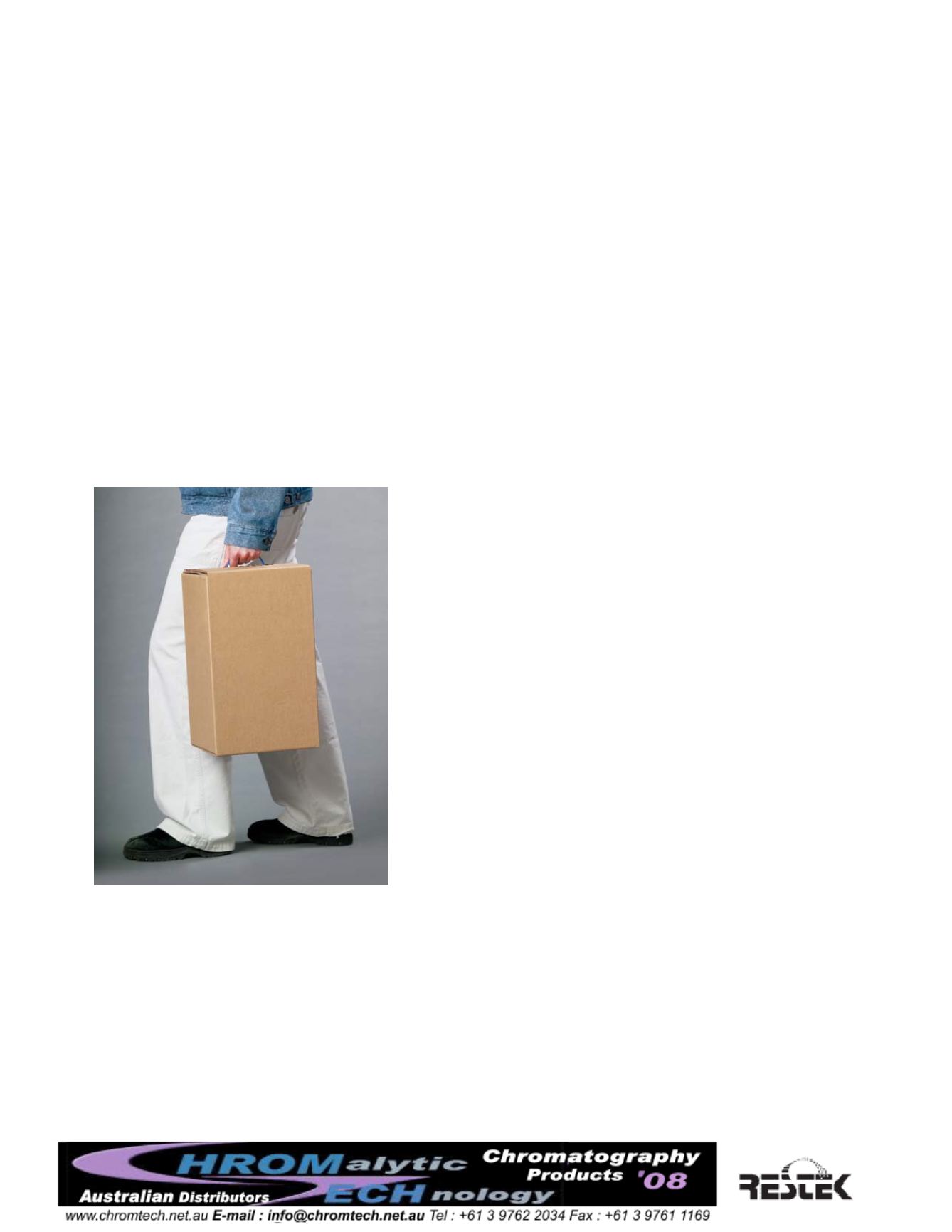
Some laboratoriescertifyacanister forVOC stabilityby introducinga lowcon-
centration test mixture into the canister and measuring degradation over a
specified time period. If the canistermeets the specification, it is certified for
use.We recommendusing such studies to ensure the effectivenessof a canister
or groupof canisters for aproposed application.
Once the canister is certified clean, evacuate the canister to a final vacuum of
10-50mtorr, using either the canister cleaning system or a clean final vacuum
system. This vacuum is critical to ensure the correct amount of sample is col-
lected.Use an accurate test gauge or digital pressure tester to ensure final vac-
uumhas been reached anddocument the final vacuum reading for the chain
of custody. Install a brass plug nut into the canister valve to ensure no con-
tamination can enter the sample pathwayduring shipment to the field.
Allot an individual identity to the canister, eitherwith a label and serial num-
ber orwith a bar code.
Some analysts prefer to introduce surrogate standards into the canister prior
to sampling. Debate on this practice revolves around theories that there are
potential loss issuesdue to lowhumidityand inadequate surfacepassivationby
water.NeitherRestek chemistsnor our consulting experts recommend adding
surrogates to the canisters. If you choose to introduce surrogates into your
canisters prior to sampling be sure to recheck the vacuum reading for each
canister after adding the surrogates, and record the reading.
V. FieldSampling,UsingaPassiveSamplingTrainandCanister
It is important tomention again that the sampling train and canistermust be
leak tested and certified clean prior to use. To properly begin field sampling,
we recommendbringing a "practice" evacuated canister and a flowmeasuring
devicewithyou to the field.Use this canister toverify the flow rate through the
passive sampling trainprior tousing the train toobtain samples of record.To
verify the flow rate, connect the passive sampling train to the "practice" canis-
ter. Attach a flowmeter to the inlet of the sampling train. Open the canister,
andmeasure the flow rate through the sampling train. If the flow rate iswith-
in+/- 10% of the flow rate set in the lab, the train is ready to be used on the
formal sampling canister. If the flow rate is not within these limits, adjust the
flow rate by adjusting the piston gap screw.
When the flow rate is confirmed, record the rate as the canister flow rate for
the chainof custody form.
Tobeginsampling,using the formal samplingcanister, follow thesesteps:
1. Remove the brass plugnut from the canister valve.
2. If you areusing a test gauge, attach the gauge to the canister and record
the vacuum reading. If you choosenot touse a test gaugeunder field con-
ditions, record the readingon the vacuum gauge that is part of the passive
sampling train.
3. Attach the verifiedpassive sampling train to the canister.
4. Record the begin sampling time andnecessarymeteorological data.
5. Open the canister valve andbegin sampling.
6. Periodically check the canister throughout the samplingperiod to ensure
the partial pressure reading is accurate and sampling is proceeding as
planned.
7. Once the samplingperiod is complete, close the valve and remove the
sampling train.Check the final partial pressurewithin the canister, using
the test gauge or the vacuum gauge in the sampling train.
Phone: 800-356-1688 or 814-353-1300
8
didyou
know
?
Restek canisters are shipped in boxeswith handles for ease of
carrying and transporting, eliminating costly carrying cases.


